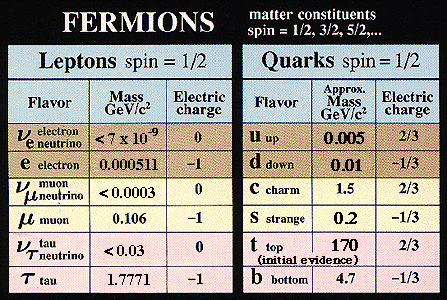
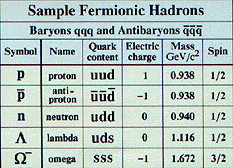
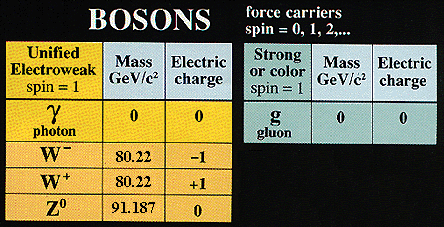
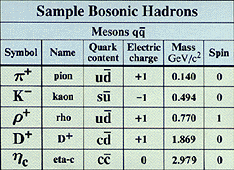
b
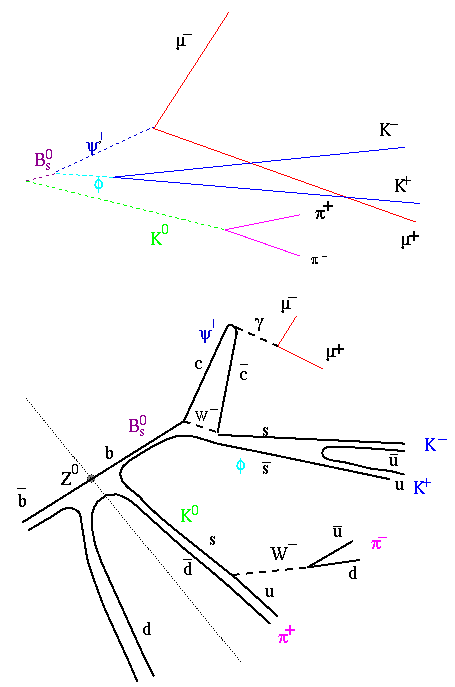 High energy collisions produce exotic particles. For example at LEP an
electron-positron collison can result in the production of a Z Boson.
The Z rapidly decays into an energetic quark- anti-quark pair which goes
onto generate exotic hadrons for example a 'strange B meson' (top figure).
After a short time this particle also decays into more particles
(an so on until only stable particles remain).
High energy collisions produce exotic particles. For example at LEP an
electron-positron collison can result in the production of a Z Boson.
The Z rapidly decays into an energetic quark- anti-quark pair which goes
onto generate exotic hadrons for example a 'strange B meson' (top figure).
After a short time this particle also decays into more particles
(an so on until only stable particles remain).
The lower figure illustrates the quark content of the particles produced in the reaction, and the further production of quark-anti-quark pairs after the decay of the Z boson. The reaction begins with the Z decay and production of a b-quark - anti b-quark pair, sufficient energy is available for additional quark pairs to be generated (energy is converted to mass, E = m c2 ). Different combinations of quarks give the variety of species of hadronic particles.